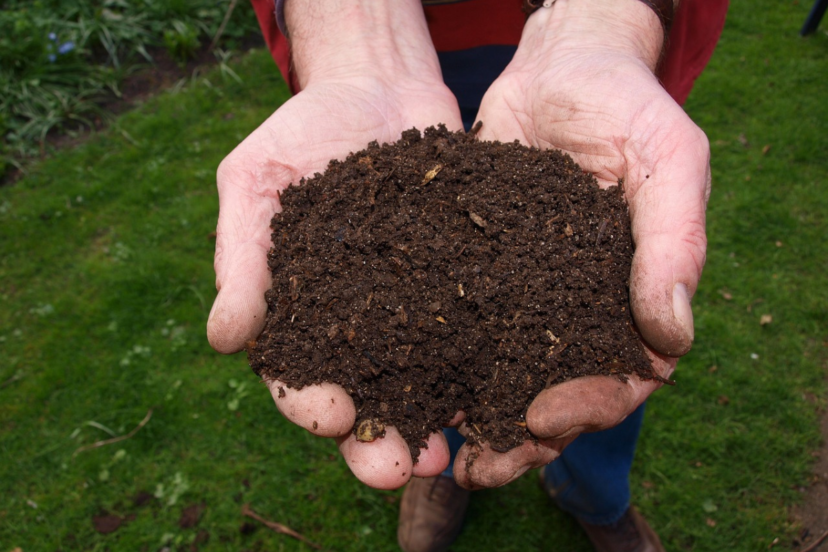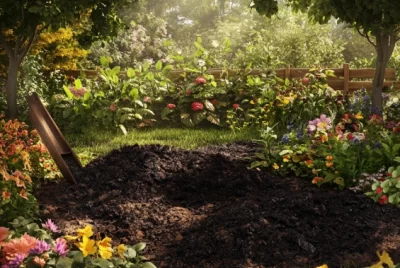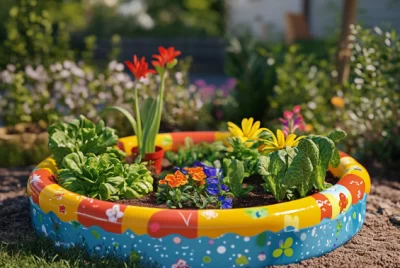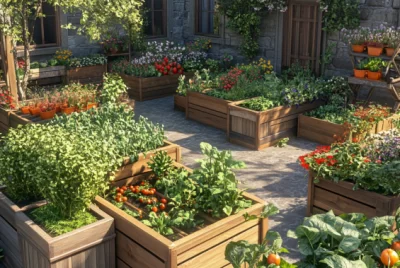Composting for Gardening: Turning Waste into Garden Gold
Composting for gardening is like nature’s way of recycling, offering us a remarkable opportunity to reduce waste, enrich our soil, and nurture thriving gardens. Imagine being able to turn your kitchen scraps and yard debris into a nutrient-rich elixir for your plants, all while contributing to a healthier planet. In this article, we’ll delve into the art and science of composting, exploring the benefits, various methods, and how to get started on this sustainable gardening journey.
Benefits of Composting for Gardening
Enhancing Soil Quality
When it comes to gardening, soil is everything. Healthy soil is teeming with life and nutrients, providing the essential foundation for robust plant growth. However, over time, soil can become depleted of these vital nutrients. This is where composting comes to the rescue. By adding homemade compost to your garden beds, you can dramatically improve soil structure and nutrient content. Compost acts like a natural fertilizer, enhancing the soil’s ability to retain moisture and support a thriving ecosystem of beneficial microorganisms.
Reducing Kitchen and Garden Waste
One of the challenges many of us face is dealing with kitchen scraps and garden waste. Vegetable peels, coffee grounds, grass clippings, and fallen leaves are often destined for the landfill. However, when you practice composting for gardening, these organic materials find a new purpose. Instead of clogging up landfills and emitting harmful greenhouse gases, they become valuable resources in your compost pile. It’s a win-win situation – less waste in landfills and more nutrients for your garden.
Environmental Impact
Composting is not just good for your garden; it’s also a powerful way to reduce your environmental footprint. When organic matter like food scraps decomposes in landfills, it produces methane, a potent greenhouse gas. By composting at home, you can significantly reduce the release of methane and lower your contribution to climate change. Additionally, using compost in your garden reduces the need for synthetic fertilizers and pesticides, promoting a more sustainable and eco-friendly approach to gardening.
In the next sections, we’ll explore the different types of composting methods, how to get started with your own compost pile, and the step-by-step process of composting. Whether you’re a seasoned gardener or just starting your green journey, composting for gardening is an accessible and rewarding practice that benefits both your garden and the planet. Let’s dig in!
Types of Composting
Composting for gardening comes in various forms, each with its unique advantages and suitability. Let’s explore some of the most common types:
Vermicomposting: Utilizing Nature’s Workers
Vermicomposting involves the use of earthworms to break down organic matter. It’s an excellent choice for small spaces, like apartments or balconies. You can set up a vermicomposting bin indoors or in a sheltered outdoor area. The worms feed on kitchen scraps and produce nutrient-rich castings, often referred to as “worm poop,” which is a superb soil conditioner.
Hot Composting: Speed and Intensity
Hot composting is all about efficiency and speed. It requires a good mix of carbon-rich (browns) and nitrogen-rich (greens) materials. The compost pile heats up significantly, promoting rapid decomposition. To succeed with hot composting, you need to monitor temperature and regularly turn the pile to ensure even decomposition. This method is perfect if you want compost quickly and have a mix of materials.
Cold Composting: Slow and Steady
Cold composting, on the other hand, takes a more relaxed approach. It doesn’t require as much attention or turning as hot composting. Cold composting is ideal for those who don’t mind waiting a bit longer for their compost. Simply pile up your organic materials in a designated spot in your garden and let nature take its course. Over time, you’ll have rich, dark compost ready to use.
Getting Started with Composting for Gardening
Now that you have an idea of the types of composting methods, let’s dive into how to start composting for gardening:
Choosing a Location
Selecting the right spot for your compost pile is crucial. It should be easily accessible, receive partial sunlight, and have good drainage. Avoid placing it too close to buildings or trees, as roots can interfere with the pile.
Materials Needed
To begin composting, gather the necessary materials:
Greens: These are nitrogen-rich materials like kitchen scraps, coffee grounds, and fresh grass clippings.
Browns: Carbon-rich materials such as dried leaves, straw, and shredded newspaper.
A compost bin or designated area in your garden.
A pitchfork or compost turner for aeration.
Creating Layers
Composting works best when you create alternating layers of greens and browns. Start with a layer of browns, followed by greens, and so on. This layering helps balance carbon and nitrogen ratios, ensuring efficient decomposition. Sprinkle some water between the layers to maintain moisture.
In the next sections, we’ll guide you through the composting process, from adding ingredients to troubleshooting common issues. By the end, you’ll be well on your way to transforming waste into garden gold.
Composting for Gardening Process: From Scraps to Soil Gold
Now that you’ve chosen your composting method and set up your compost pile, let’s explore the composting process itself:
Adding Ingredients
Composting for gardening begins with adding the right ingredients to your pile. Greens, like kitchen scraps and fresh yard waste, provide nitrogen and moisture, while browns, such as dried leaves and cardboard, offer carbon and structure. The key is to maintain a balance between the two. Avoid adding diseased plants, meat, dairy, or pet waste, as they can attract pests and slow down the decomposition process.
Turning the Pile
To aerate your compost and speed up decomposition, use a pitchfork or compost turner to regularly turn the pile. This incorporates oxygen, a crucial element for the microbes responsible for breaking down organic matter. Turning also ensures even decomposition and helps manage moisture levels.
Monitoring
Keep an eye on your compost pile’s progress. The temperature inside the pile will rise as decomposition occurs, which is a good sign. However, if it gets too hot, it can kill beneficial microbes. Aim for a temperature range between 130°F to 160°F (54°C to 71°C). Additionally, check the moisture level; your compost pile should feel like a damp sponge. Adjust by adding water or more dry browns if needed.
Troubleshooting Common Issues
Composting for gardening can sometimes hit a few bumps along the way. Here are some common problems and their solutions:
Odor Issues
If your compost pile starts smelling bad, it’s likely too wet or contains too many greens. Add more browns like dried leaves or shredded paper to balance the moisture and reduce the smell. Turning the pile will also help.
Pest Control
Unwanted pests can be attracted to your compost pile. To deter them, bury kitchen scraps under a layer of browns, and avoid adding meat or dairy products. Regular turning and covering the pile can also keep pests at bay.
Slow Decomposition
If your compost is taking longer to break down, ensure you have the right balance of greens and browns. Chop materials into smaller pieces to speed up decomposition. Maintain adequate moisture and aeration for efficient composting.
Using Compost in Your Garden
Now that you’ve successfully produced nutrient-rich compost, it’s time to reap the rewards in your garden:
Soil Amendment
Mix your compost into garden soil to improve its structure and nutrient content. The compost will provide essential minerals and enhance water retention, resulting in healthier plants.
Mulching
Spread a layer of compost on the surface of your garden beds to act as mulch. This helps suppress weeds, retain moisture, and regulate soil temperature, creating a conducive environment for plant growth.
Compost Tea
Compost tea is a liquid fertilizer made by steeping compost in water. It’s a fantastic way to provide a nutrient boost to your plants. Simply soak compost in water, strain it, and use the liquid to water your garden.
Conclusion: Composting for a Greener Garden
In the world of gardening, there’s a secret weapon that seasoned growers swear by – composting. Composting for gardening isn’t just about recycling kitchen scraps and yard waste; it’s a transformative journey that enriches your soil, reduces waste, and fosters a deep connection with nature. As we conclude our exploration of this green practice, let’s recap the key takeaways:
Benefits of Composting for Gardening
Enhanced Soil Quality: Compost improves soil structure, nutrient content, and water retention, creating an ideal environment for plant growth.
Waste Reduction: Composting diverts kitchen and garden waste from landfills, reducing your environmental impact.
Environmental Impact: By composting, you help mitigate climate change by minimizing methane emissions and promoting sustainable gardening practices.
Types of Composting for Gardening
Vermicomposting: Ideal for small spaces, it uses earthworms to turn kitchen scraps into nutrient-rich castings.
Hot Composting: Delivers fast results by maintaining high temperatures and requires regular turning.
Cold Composting: A slower but low-maintenance method that involves piling organic materials in your garden.
Getting Started With Composting for Gardening
Location: Choose a suitable spot with access to partial sunlight and good drainage.
Materials: Collect nitrogen-rich greens (kitchen scraps, grass clippings) and carbon-rich browns (dried leaves, cardboard).
Layering: Alternate greens and browns in your compost pile to maintain balance and add moisture.
The Composting for Gardening Process
Adding Ingredients: Kitchen scraps, yard waste, and more provide the raw materials for composting.
Turning the Pile: Regular turning ensures oxygen reaches microbes and accelerates decomposition.
Monitoring: Keep an eye on temperature and moisture levels to ensure an efficient composting process.
Troubleshooting
Odor Issues: Correct excess moisture or greens by adding browns and turning the pile.
Pest Control: Bury kitchen scraps and avoid meat and dairy to deter pests.
Slow Decomposition: Ensure the right balance of greens and browns, chop materials, and maintain moisture and aeration.
Using Compost in Your Garden
Soil Amendment: Mix compost into garden soil to improve structure and nutrient content.
Mulching: Use compost as a protective layer to suppress weeds and regulate soil temperature.
Compost Tea: Create a nutrient-rich liquid fertilizer by steeping compost in water and nourishing your plants.
As you embark on your composting journey, remember that you’re not just enriching your garden but also contributing to a healthier planet. Composting for gardening is a small action with significant environmental benefits. It’s a testament to the idea that we can all play a part in reducing waste, mitigating climate change, and fostering a more sustainable future.
So, get your hands dirty, turn your kitchen scraps into gold, and watch your garden thrive like never before. Happy composting!
Frequently Asked Questions (FAQs) about Composting for Gardening
Why should I bother with composting for gardening when I can buy fertilizers?
Answer: Composting offers numerous benefits that extend beyond fertilizers. It enriches your soil naturally, improves its structure, enhances water retention, and promotes the growth of beneficial microorganisms. Plus, it’s an eco-friendly way to reduce kitchen and garden waste.
Can I compost pet waste?
Answer: It’s generally not recommended to compost pet waste in your regular compost pile. Pet waste can contain harmful pathogens, and the high temperatures in a home compost pile may not eliminate them. However, there are specialized composting systems designed for pet waste, but they require careful management and should be kept separate from your regular compost.
How long does it take to make usable composting for gardening?
Answer: The time it takes to produce usable compost depends on factors like the composting method, materials used, and environmental conditions. In a hot compost pile, you can have compost ready in as little as a few months. Cold composting may take up to a year or more. Regularly turning the pile and maintaining the right balance of greens and browns can speed up the process.
Can I compost citrus peels and onion scraps?
Answer: Yes, you can compost citrus peels and onion scraps. However, these materials are considered greens and should be balanced with carbon-rich browns like dried leaves or cardboard. Adding them in moderation is key to maintaining a healthy compost pile and preventing any potential issues with acidity.
What do I do if my composting for gardening pile smells bad?
Answer: A smelly compost pile is often a sign of excess moisture or too many greens. To remedy this, add more brown materials like dried leaves or shredded paper to balance the moisture. Ensure proper aeration by turning the pile regularly. Correcting the balance between greens and browns should eliminate the unpleasant odor.




